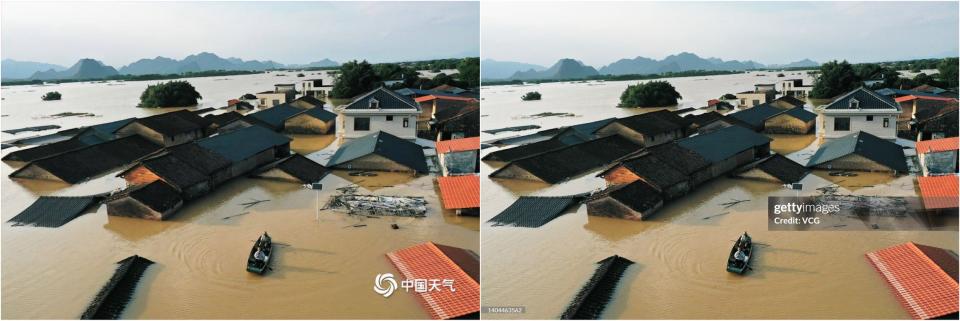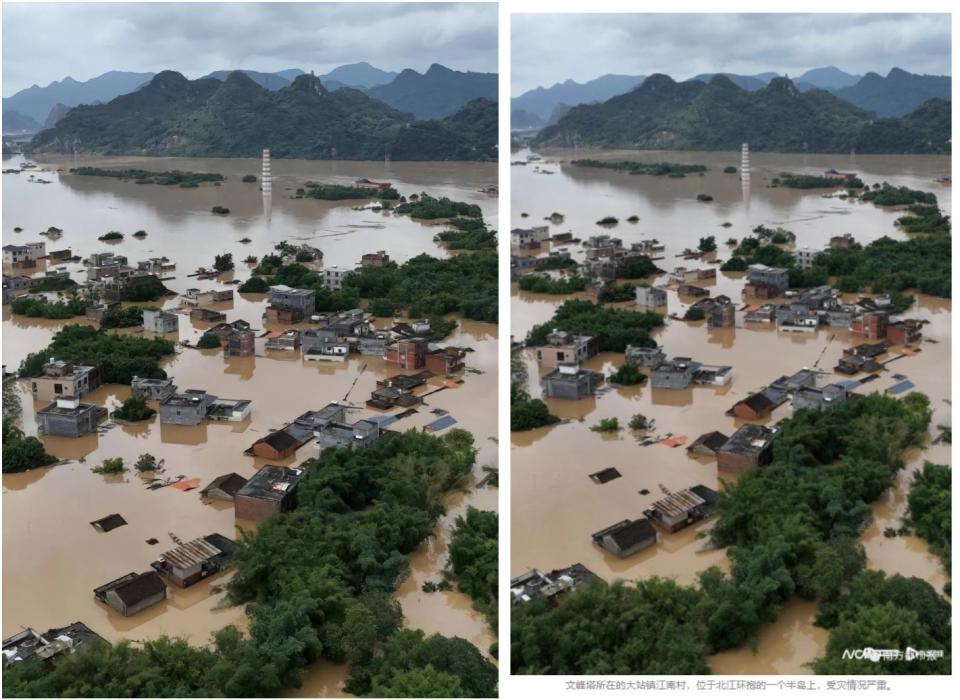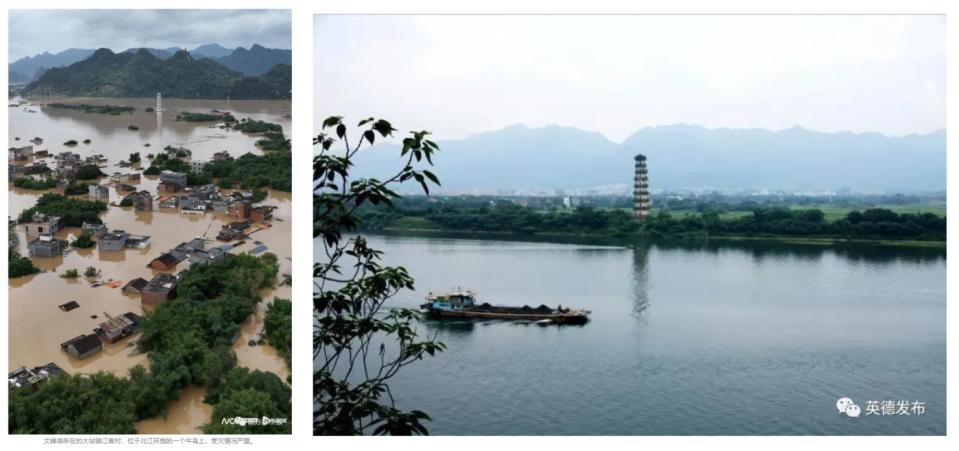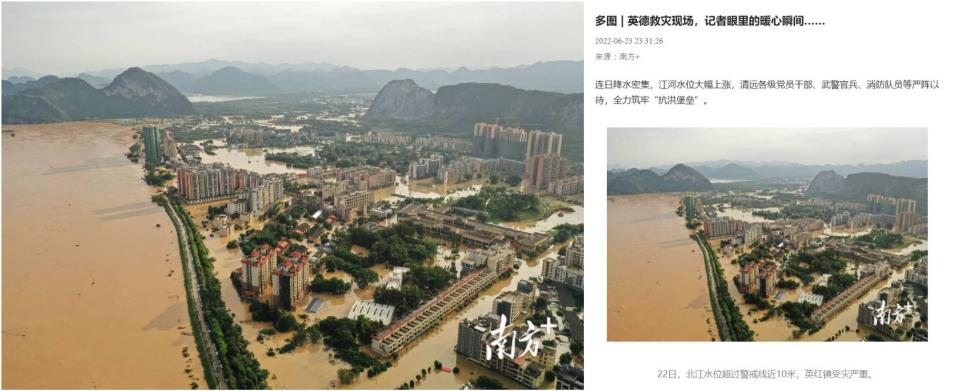Severe floods in southern China’s Guangdong province claimed the lives of four people and forced the evacuation of more than 100,000 in April 2024, however, online posts have shared old photos of record flooding there in 2022. The earlier crisis left some Chinese towns submerged by floodwaters and forced hundreds of thousands of people to evacuate.
“April 20, the town of Hanguang in Yingde county, Guangdong,” read the simplified Chinese caption of an X post shared on April 23, 2024.
The post included four photos showing buildings submerged in muddy floodwaters.
More than 45,000 people were evacuated from Yingde, a county in northern Guangdong’s Qingyuan city that sits on the low-lying Pearl River Delta, official media reported on April 21, 2024, after days of torrential rains caused landslides and severe flooding across the province.
By April 24, the “once a century” deluge had claimed the lives of four people and forced the evacuation of 100,000, as authorities warned of more rain to come in the week that followed.
The severe floods are virtually unheard of so early in the year even in lush, subtropical Guangdong, with one senior official linking them to worsening climate change.
The images were shared repeatedly online across posts on X and Facebook, as well as on Taiwanese news site Newtalk.
But the photos date back to June 2022.
2022 Guangdong floods
Reverse image searches on Google found the first photo was credited to the Chinese photo agency Visual China Group (VCG) and distributed by Getty Images on June 22, 2022 (archived link).
The caption read: “Aerial view of a flood-hit township after torrential rains on June 22, 2022 in Yingde, Qingyuan City, Guangdong Province of China. Flood control authority of China’s Guangdong Province activated a Level-I emergency response on Tuesday.”
Record floods forced hundreds of thousands of people to evacuate parts of southern China in June 2022, as heavy rains pushed water levels in the Pearl River Delta — home to economic powerhouses Guangzhou and Shenzhen — to their highest in almost a century, AFP reported.
Below is a screenshot comparison of the photo in the false posts (left) and the photograph credited to (VCG)(right):

The same photo was also used in reports by China National Emergency Broadcasting (CNEB) and national broadcaster CCTV (archived links here and here).
The second photo — which shows a submerged tower and other buildings — was published on June 22, 2022 by the Southern Metropolis Daily newspaper (archived link).
The report stated that the Wenfeng Tower, a Yingde landmark and tourist attraction, was submerged along with low-lying houses near the Bei River (archived link).
Below is a screenshot comparison of the photo in the false posts (left) and the photo published by the Southern Metropolis Daily (right):

AFP located the Wenfeng Tower on Google Maps and found a corresponding photo of it published by the local government (archived links here and here).
Below is a screenshot comparison of the picture published by the Southern Metropolis Daily (left) and the one published by the local government (right):

The third picture in the posts also shows the Wenfeng Tower surrounded by floodwaters.
It was published by China National Radio (CNR) on June 21, 2022, in a report about local authorities’ floodwater level predictions for the southern Chinese city of Qingyuan (archived link).
Below is a screenshot comparison of the third photo in the false posts (left) and the image published by CNR (right):

The last photo — which shows a hillside township submerged in muddy water — included a watermark for Guangdong’s state-run newspaper Nanfang Daily.
AFP found it was published by the paper here on June 23, 2022 in a report about the flood rescue efforts in Guangdong’s Yingde county (archived link).
According to the caption, the photo shows flooding in Yinghong township, central Yingde (archived link).
Below is a screenshot comparison of the photo in the false posts (left) and the photo published by Nanfang Daily (right):

Flooding during China’s wet season is sometimes deadly and often spawns a surge of disinformation, debunked previously by AFP here, here and here.
